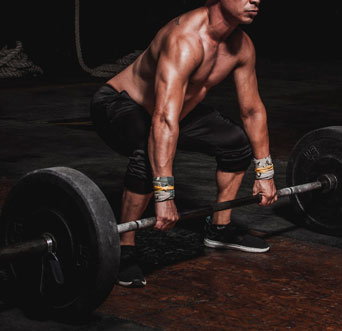The deadlift, often hailed as the king of strength exercises, is a fundamental and highly effective lift that has been a staple in strength training programs for decades.
Whether you’re an athlete looking to improve your performance or someone simply interested in building raw strength, the deadlift is an exercise that should not be overlooked.
In this article, we will explore the mechanics, benefits, variations, and proper technique of the deadlift.
Understanding the Deadlift
The deadlift is a compound exercise that targets several major muscle groups, including the lower back, glutes, hamstrings, and grip strength.
It involves lifting a barbell or other weighted object from the ground to a standing position.
The Benefits of Deadlifting
- Increased Strength: Deadlifting is one of the most effective ways to build overall strength. It engages multiple muscle groups simultaneously, leading to substantial gains in muscle mass and power.
- Improved Posture: Deadlifting helps strengthen the muscles responsible for maintaining proper posture, reducing the risk of back pain and injury.
- Enhanced Grip Strength: A strong grip is crucial not only for lifting heavy weights but also for daily activities. Deadlifting regularly can significantly increase grip strength.
- Functional Strength: The deadlift mimics real-life activities such as lifting heavy objects off the ground. This functional strength can improve your performance in various sports and everyday tasks.
Proper Deadlift Technique
- Setup: Stand with your feet hip-width apart, with the barbell over the mid-foot. Bend at your hips and knees to lower your body until your shins touch the bar. Grasp the bar with a grip just outside your knees, keeping your back straight and chest up.
- Lift: Take a deep breath, engage your core, and push through your heels while pulling the bar upward. Maintain a straight back and keep the bar close to your body. As you stand upright, extend your hips and knees simultaneously.
- Lockout: At the top of the lift, stand tall with your shoulders back and hips fully extended. The bar should be in contact with your thighs, and your body should form a straight line from head to heels.
- Lowering: To lower the bar, hinge at your hips and push your buttocks back while keeping the bar close to your body. Once the bar passes your knees, bend your knees and gently lower it to the ground.
Common Mistakes to Avoid
- Rounding the Back: Maintaining a straight back is crucial. Rounding the back can lead to serious injuries.
- Not Using Proper Footwear: Wear flat-soled shoes or go barefoot to ensure stability and proper weight distribution.
- Overextending the Neck: Keep your head in a neutral position to avoid straining your neck.
Variations of the Deadlift
There are several deadlift variations, including the sumo deadlift, Romanian deadlift, and trap bar deadlift, each targeting slightly different muscle groups or emphasizing specific aspects of strength.
Conclusion
The deadlift is a foundational strength exercise that offers a myriad of benefits, from increased overall strength to improved posture and grip strength.
When performed with proper technique and incorporated into a well-rounded fitness routine, the deadlift can help you achieve new levels of strength and fitness, making it a true cornerstone of strength training programs worldwide.
So, whether you’re a seasoned lifter or a beginner, don’t neglect the king of strength exercises – the deadlift.




